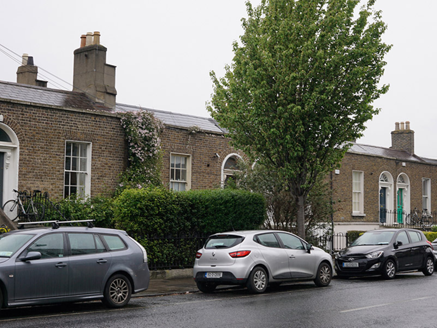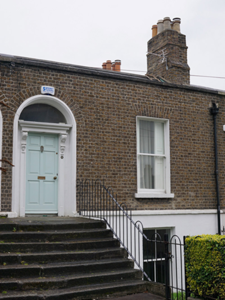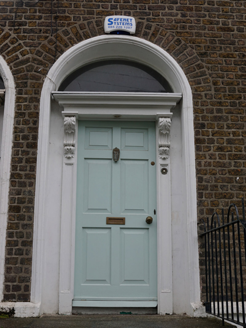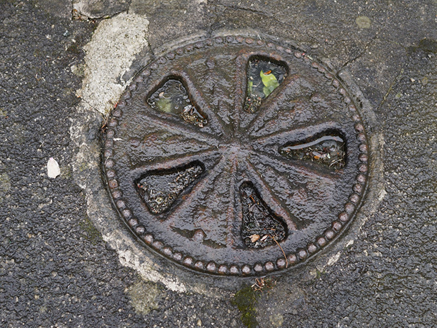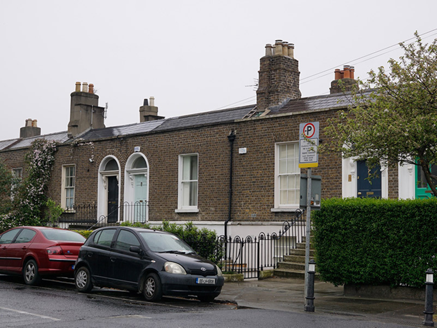Survey Data
Reg No
50110245
Rating
Regional
Categories of Special Interest
Architectural, Artistic
Original Use
House
In Use As
House
Date
1840 - 1860
Coordinates
315381, 232867
Date Recorded
30/04/2017
Date Updated
--/--/--
Description
Terraced two-bay single-storey house over basement, built c. 1850. M-profile pitched slate roof with clay ridge tiles, partly hidden behind brown brick parapet having granite coping. Rendered chimneystacks with clay pots, cast-iron rainwater goods. Brown brick, laid in Flemish bond, to walls, having cut granite plinth course, and smooth rendered wall to basement. Square-headed window openings with rendered reveals and masonry sills, one-over-one pane timber sliding sash windows. Square-headed window opening having timber casement window to basement. Elliptical-headed door opening with moulded render surround, doorcase comprising panelled pilasters, fluted console brackets having acanthus leaf detail, and stepped cornice. Plain fanlight and timber panelled door. Square-headed basement door opening with part-glazed timber battened door. Granite platform with cast-iron coal hole cover. Granite steps flanked by replacement railings. Cast-iron railings to front with loop detail, set on carved granite plinth wall, matching gate to basement area.
Appraisal
This house is enhanced by the retention of historic features including well-maintained windows. A well-executed classically-influenced doorcase lends subtle decorative interest to the otherwise modest façade. Cut granite detailing articulates the façade. Heytesbury Street, named after Baron Heytesbury, Viceroy 1844-6, was first laid out in 1846 and was nearing completion by 1861. The streetscape maintains a strong sense of its original character, with well-preserved classically-influenced brick houses, many with Greek revival details, creating a strong sense of rhythm and order.
